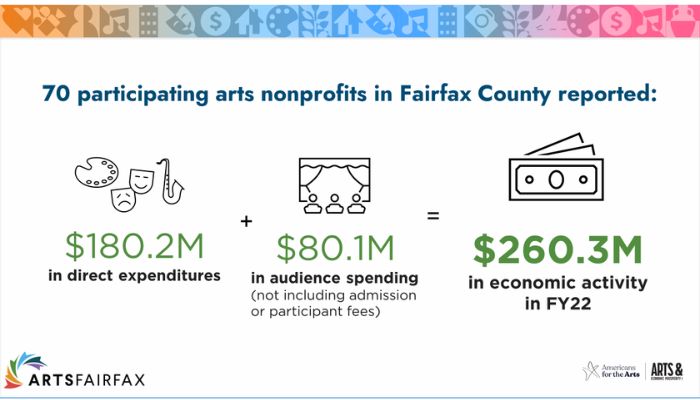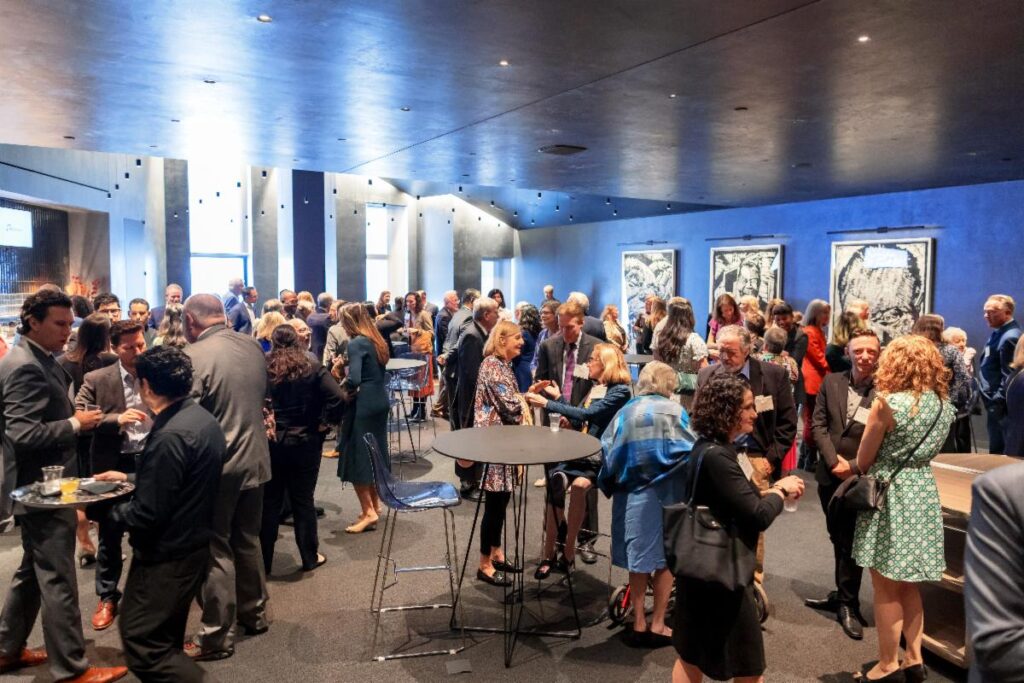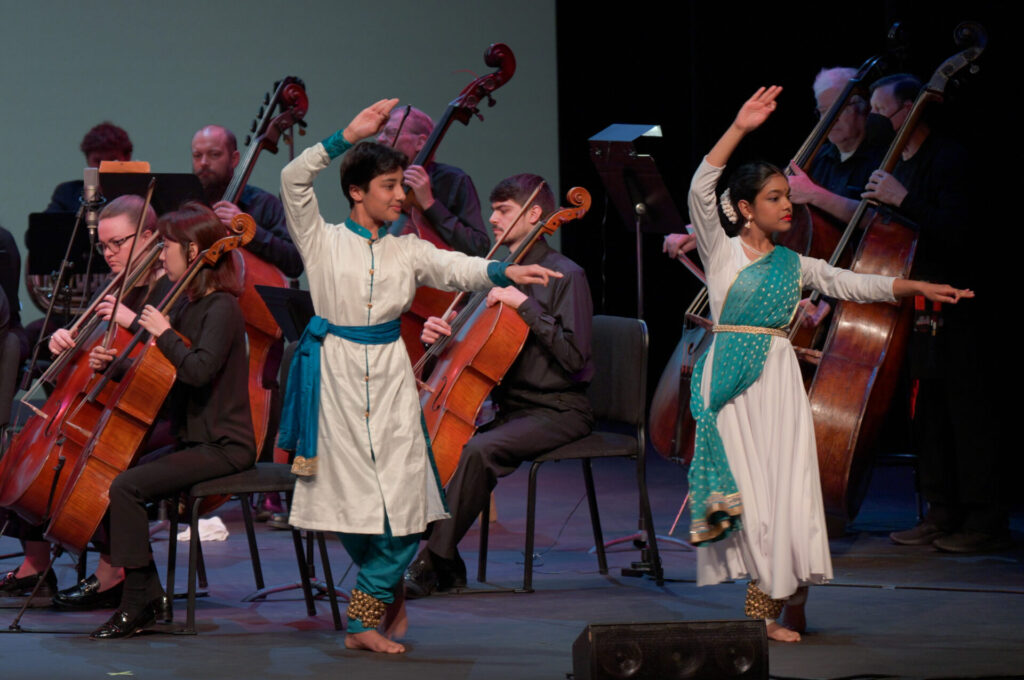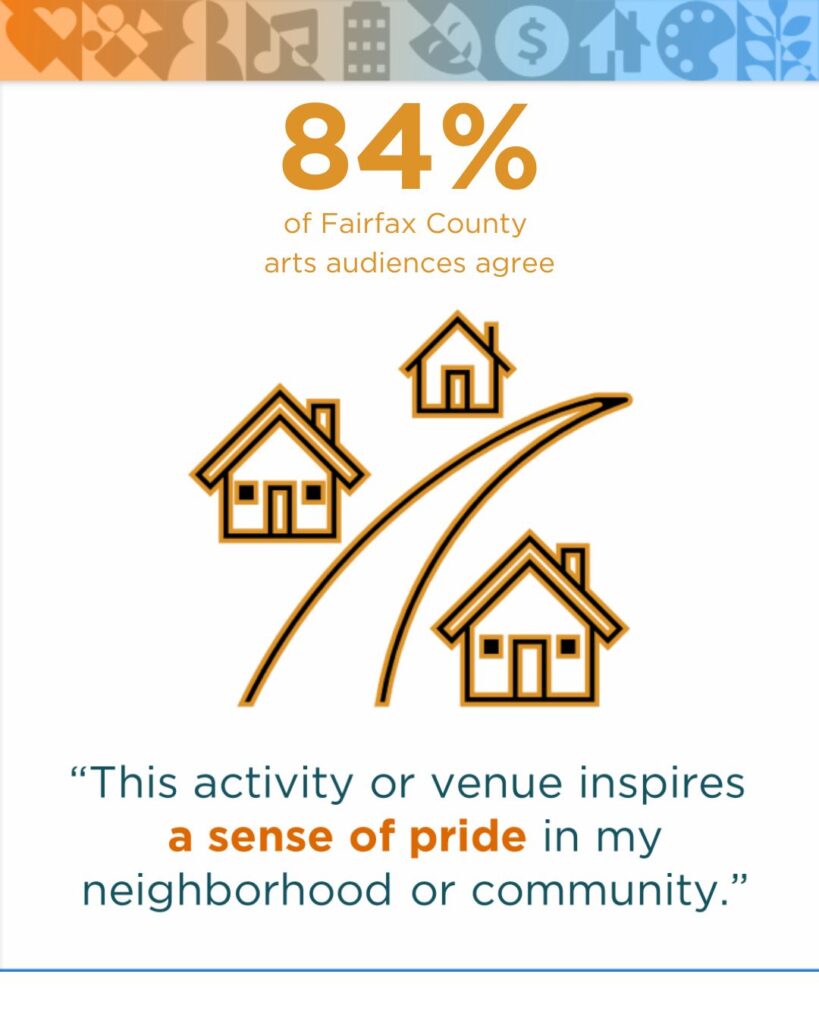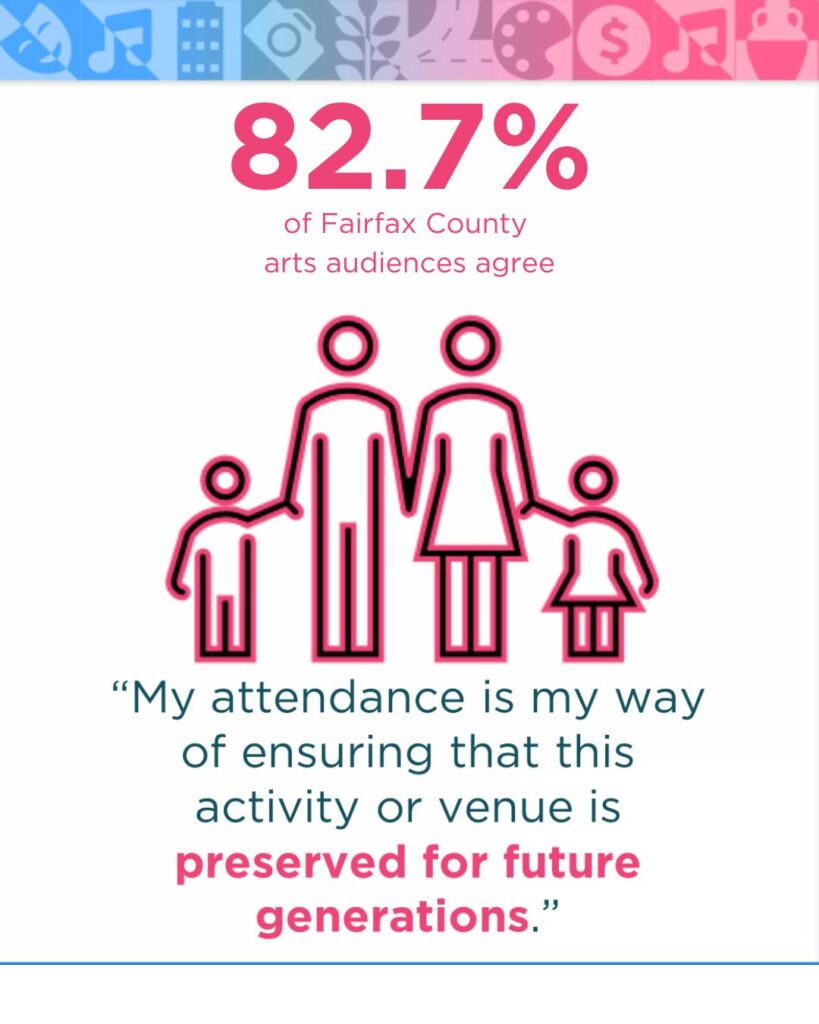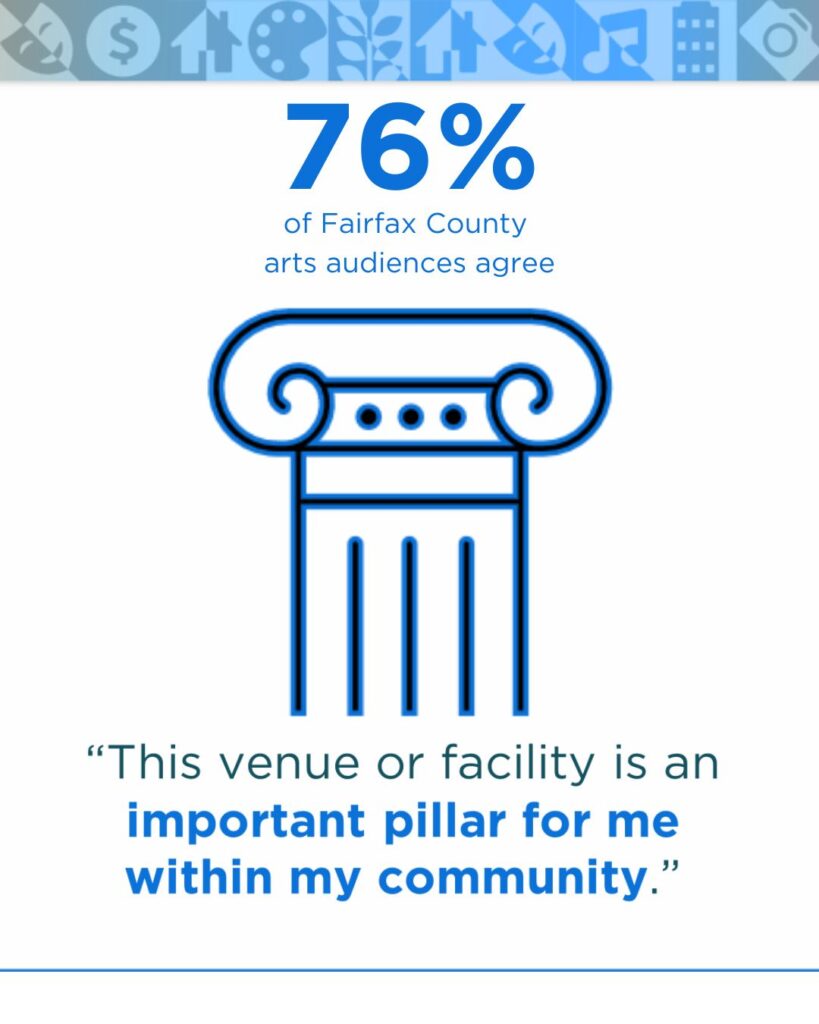AEP6

Arts & Economic Prosperity in Fairfax County
ArtsFairfax led the Arts and Economic Prosperity 6 (AEP6) research to discover the economic and social impact of nonprofit arts and culture organizations in Fairfax County. These outcomes do not account for the community contributions of for-profit organizations or the entirety of the nonprofit arts sector.*
AEP6 delivers a clear and welcome message: when communities invest in arts and culture, they are investing in an industry that stimulates the economy, supports local jobs, and contributes to building healthy, vibrant, and more livable communities.
* In Fairfax County, 70 of the 177 total eligible nonprofit arts and culture organizations identified by ArtsFairfax provided the financial and attendance information required for the study analysis—an overall participation rate of 39.5%.
In Fairfax County, the sector generated $260.3 million in economic activity during FY22.
Local nonprofit arts and culture organizations spent a collective $180.2 million, and their audiences spent an additional $80.1 million in event-related expenditures beyond the cost of admission.
Together, this economic activity supported 3,070 jobs and generated $43.7 million in tax revenue to local, state, and federal governments.
Find a Summary of Fairfax County Findings here.
Read the Full Report on Fairfax County here.
Try the Economic Impact Calculator!
Fairfax County arts and culture nonprofits can use this calculator to gauge their organization’s impact on the economy. See page 28 of the Fairfax County Full Report for more information.
Nonprofit arts and culture organizations are businesses.
They employ people locally, purchase supplies and services from nearby businesses, and engage in the marketing and promotion of their cities and regions. Their very act of doing business—creating, presenting, exhibiting, engaging—has a positive economic impact and improves community well-being.
In Fairfax County, nonprofit arts and culture organizations spent an estimated $180.2 million.
Local arts organizations generated a total of $33.2 million in tax revenues.
Additionally, their audiences contributed $80.1 million to the local economy and generated $10.5 million in tax revenues.
In addition to sustaining thousands of jobs, arts nonprofits worked with 3,797 volunteers who donated a total of 131,499 hours, representing a donation of time with an estimated aggregate dollar value of $4.3 million.
Arts and culture drive commerce to local businesses.
A vibrant arts and culture community keeps residents—and their discretionary dollars—local. When people attend a cultural event, they often make an outing of it—dining at a restaurant, paying for parking or public transportation, enjoying dessert after the show, and returning home to pay for child or pet care.
Attendees spent $22.17 per person per event, beyond the cost of admission. These dollars represent vital income for local merchants and a value-add with which few industries can compete.
30% of local audiences indicated that it was the first time they had ever attended the activity or venue where they were surveyed.
If the event where they were surveyed had not been available, 57% of attendees who live in Fairfax County said they would have “traveled to a different community to attend a similar arts or cultural activity.”
Arts and culture strengthen the visitor economy.
39% of arts attendees are nonlocal visitors who traveled from outside Fairfax County; they spent an average of $22.04 per person per event beyond the cost of admission, contributing $31M to our local businesses.
85% of nonlocal attendees reported that the primary purpose of their visit was specifically to attend the performance, event, exhibit, venue, or facility where they were surveyed.
73% of nonlocal attendees agreed, “I would have traveled to a different community to attend a similar arts or cultural activity.”
Arts and culture are a fundamental component of livable communities—beautifying cities and towns, bringing joy to residents, and celebrating diverse cultural expressions and traditions. It powers the creative communities where people want to live and work, where entrepreneurs and innovation thrive, and where businesses and nighttime economies flourish. Shared cultural experiences strengthen a sense of belonging and community pride.
About the Study
The Arts & Economic Prosperity 6 study was conducted by Americans for the Arts, the nation’s leading nonprofit organization for advancing the arts and arts education. Conducted every five years with local and state research partners, the study measures the economic and social impact of the nation’s nonprofit arts and culture industry. The study areas range in population from 4,000 to 4 million and represent rural, suburban, and urban communities. ArtsFairfax served as the local research partner for Fairfax County.
Now in its sixth iteration, AEP6 represents a reset from its previous versions, establishing a new benchmark in the AEP study series. For the first time, AEP6 expands beyond the economic and financial data to include social impact measurements of arts and culture’s effect on the well-being of communities and residents. AEP6 also broke new ground by prioritizing equity, community engagement, and inclusivity. With the goal of reducing systemic bias, Americans for the Arts transformed its approach and directed research partners to “identify, approach, and establish new and strengthen existing relationships with organizations representing BIPOC- (Black, Indigenous, People of Color) and ALAANA- (African, Latine, Asian, Arab, Native American) identifying communities.”
As the research partner for Fairfax County, ArtsFairfax collected expenditure data from 70 local nonprofit arts and culture organizations and event-related spending information from over 900 event attendees between May 2022 and June 2023. We attended performances, events, and activities to ask participants to complete a short, anonymous survey about their spending related to that event, opinions about the social impact of the arts, ZIP code of their primary address, and basic socioeconomic information. Surveys took place only while attendees were attending the event.

